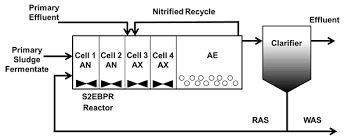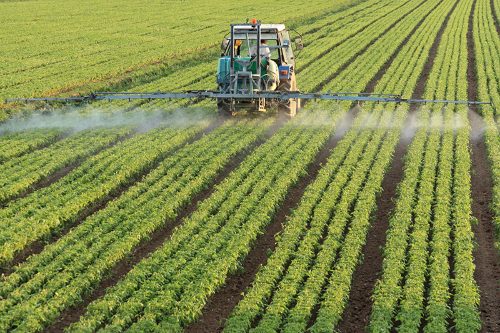Reflections from Entex’s VP of Engineering, Jeff Danner, from the WEF 2019 Nutrient Removal and Recovery Symposium:
Last week I had the chance to attend the Water Environment Federation 2019 Symposium on Nutrient Removal and Recovery Symposium in Minneapolis, MN. It is always refreshing to get away from the daily rhythm of engineering calculations and project execution to step back and consider some of the larger trends in our industry and water and wastewater management in general.
Much of the focus of the conference was on recovery of nitrogen and phosphorous for their beneficial use in fertilizer. At present in the U.S., approximately 21% of phosphorus is recovered through a combination of incorporation into biosolids for field application or precipitation as struvite. Recovery of nitrogen is much lower, at only 11%, primarily from biosolids application. As is often the case for a wastewater conference, there was a lot of discussion about urine, specifically the potential environmental and economic benefits of recovering nitrogen from the 9-10 mg/L of urea. However, harvesting urea efficiently would require retrofitting our plumbing and sewer systems to allow segregation of “yellow water”, which would be a lengthy and challenging undertaking.
Although research is ongoing in nitrogen and phosphorous removal, there are a number of promising strategies that both industrial and municipal plants can begin to implement now. For example, the traditional approach for Bio-P has been utilizing anaerobic selectors such as the 5-stage Bardenpho process in which the both the RAS and primary clarifier effluents are introduced into an anaerobic zone in the front end of the process.

Figure 1. Source Separation of Urine as an Alternative Solution to Nutrient Management in Biological Nutrient Removal Treatment Plants – Scientific Figure on ResearchGate. Available from: https://www.researchgate.net/figure/Process-configuration-Five-stage-Bardenpho-process_fig1_286967245 [accessed 25 Jul, 2019]
In this process, volatile fatty acids (VFAs) from the primary clarification process selectively promote the growth of phosphate accumulating organisms (PAOs) in the anaerobic zone. Downstream in the aerobic zone, the PAOs accumulate excess phosphorus that is then removed from the system in the WAS. While the 5-stage Bardenpho process can be quite effective, it is vulnerable to high flow events, which reduce the residence time in the anerobic zone.
A new and interesting variation on the anaerobic selector processes is the Side Stream Enhanced Biological Phosphorus Removal (S2EBPR) process. In this approach, a portion of the RAS is fermented to produce additional VFAs to increase the population of PAOs. The primary clarifier effluent bypasses the anaerobic zone, which preserves the residence time of this step during high-flow events.

Figure 2. A Full-Scale Comparative Study of Conventional and Side-Stream Enhanced Biological Phosphorous Removal Processes. Available from: https://www.preprints.org/manuscript/201808.0250/v1 [accessed 25 Jul, 2019]
The S2EBPR process has demonstrated the ability to reliably reduce the P content of the effluent to <0.5 mg/L.
Much of the focus on nitrogen removal at the conference addressed the potential to achieve both nitrification and denitrification in a single tank/basin. For example, efforts to develop a robust annamox process, which utilizes specialized bacteria that can convert ammonia to nitrogen gas, continue. Maintaining the necessary environment for these bacteria requires sophisticated controls and instrumentation and highly trained operators. Another option is to use granular sludge in which the exterior of the granule is aerobic, and the interior is anoxic. The granular sludge process requires two clarifiers, one to settle and return the granules followed by a traditional clarifier to settle the floc from the suspended biomass.
Do you see nutrient removal challenges on the horizon? If so, please reach out to Entex. We can help you evaluate incorporating recent innovations in phosphorus removal into your flowsheet. We can also assist with single-tank, nitrification-denitrification where our 3-D woven EnTextile media in our WavTex system facilitates aerobic processing at the surface and creates an anoxic zone in the interior in a single aerobic step. Our WavTex system incorporating the EnTextile media has proven robust and simple for operators of all levels of sophistication.
